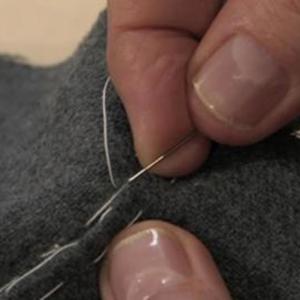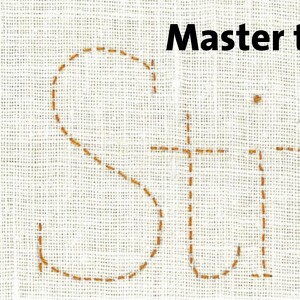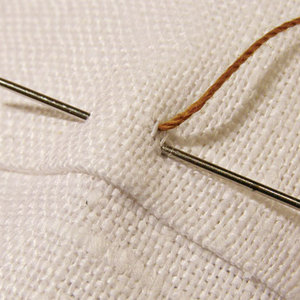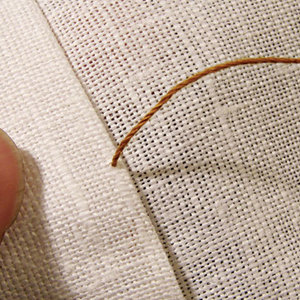How to Do a Slipstitch

Hand stitches like the slipstitch are crucial in good finishing; when sewn properly, they are as strong as machine sewn stitches, and you can do them almost as quickly. But many people avoid them and try to always use machines.
A few words on thread before I begin: Any thread longer than the distance from your hand to your elbow will tangle when you work and slow you down. I’ve actually clocked this; it’s faster to re-thread than to fight a long length of thread.
Before they sew, some sewers wax their thread to strengthen it and make it easier to work with. I don’t, but I do iron it to take out any extra twists. When you’re buying thread, beware of bargains. those spools you get ten for a dollar aren’t for fine sewing. Good-quality thread allows you to work faster, and it’s more durable.
You should also always keep a good supply of sharp, high-quality needles. Preferences in lengths and diameters vary; my favorite is a no. 10 milliner’s needle because it’s slightly longer than a regular hand-sewing needle; it feels better in my hand (probably because I’m used to long beading needles). Experiment and find the needle that suits you best. With good thread and your favorite needle, you’re ready to master the slip stitch.
The slipstiitch is an excellent hemming and finishing stitch because the thread is hidden inside a fold when it’s sewn properly. The needle “tunnels” between the layers of the folded edge-hence the word “slip.” Use it for hemming and sewing linings in or garment sections together. To keep the stitches flat and hidden, tunnel the needle about 1mm below the fold. In hemming and finishing applications, keep the thread tension snug but not…
Start your 14-day FREE trial to access this story.
Start your FREE trial today and get instant access to this article plus access to all Threads Insider content.
Start Your Free TrialAlready an Insider? Log in


































This is a useful thing to know I have been using it for years
Many, many thanks for explaining this WITH PHOTOS! As a beginning quilter the slipstitch is used to attach the quilt binding and I've had such trouble trying to do this stitch. This really helps! Thanks again! :)
I find it easier to do exactly opposite: keep the body of the garment towards me, and catch the hem on the away side. This is also the stitch to use for a pinked (catch 1/4" down) or seam-binding-edged hem. Keep the stitch under 3/8" total.